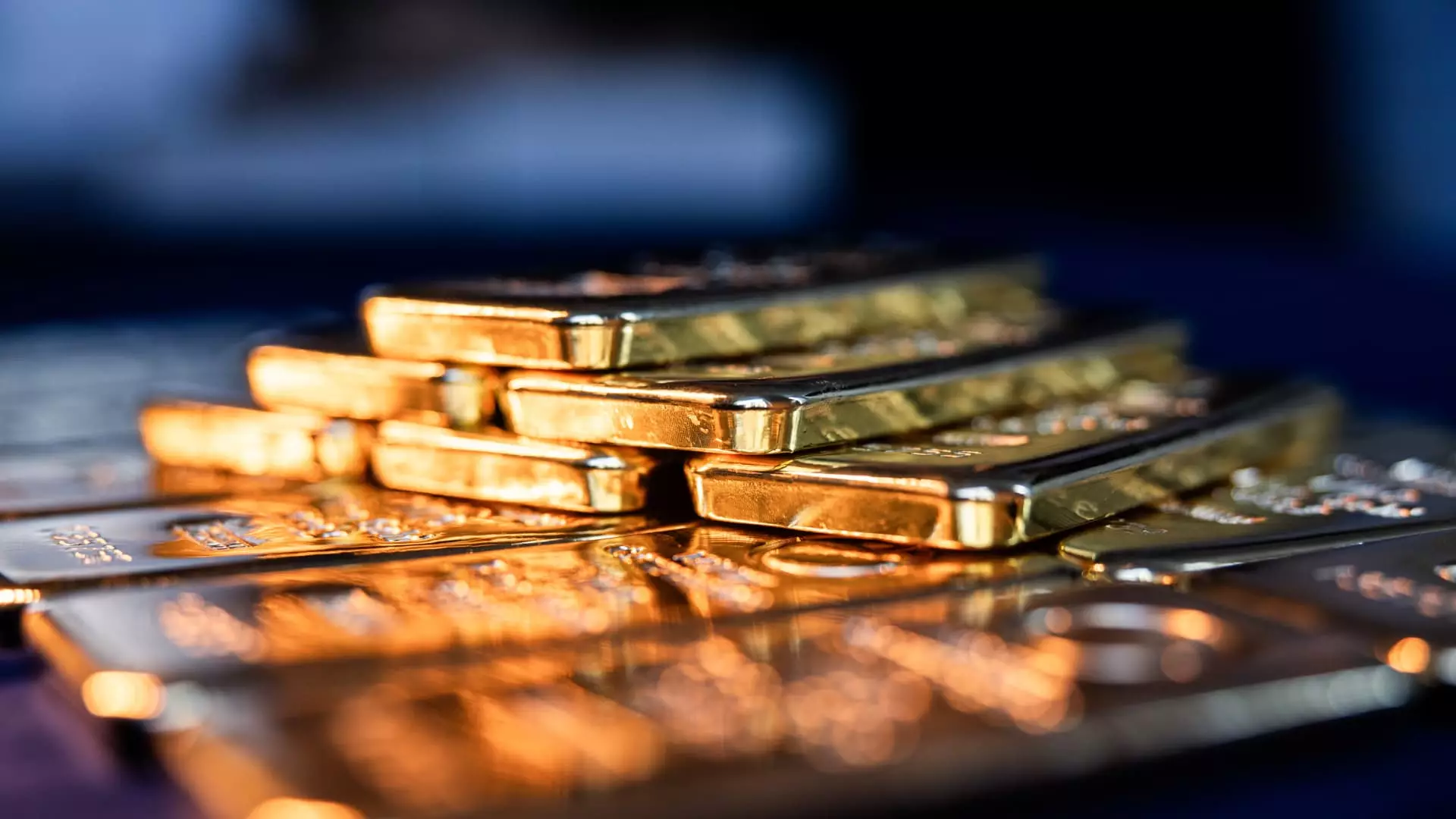Gold has long held its status as the go-to refuge for investors during market turbulence and economic instability. Its allure is particularly strong when political tensions flare and fiscal policies spark anxiety about potential recessions. Recently, we’ve seen gold prices reaching unprecedented heights, surpassing $3,000 an ounce. While this might seem like a golden opportunity, it’s essential to approach such trends with caution. The current environment is not merely a straightforward tale of soaring gold prices; it raises critical questions about the sustainability of these increases and whether the rush to invest in gold is indeed justified.
The Peak of Optimism?
The heightened optimism surrounding gold prices has led some analysts, like Sameer Samana from the Wells Fargo Investment Institute, to suggest we are nearing a tipping point. He points out the risks of entering the market late, cautioning that while gold’s ascent might have further to go, potential investors may be “coming a little late to the party.” At a time when the broader financial market shows signs of decay—with the S&P 500 slipping 11% in 2025—the sudden appeal of gold begins to resemble a speculative bubble rather than a prudent investment strategy.
It’s essential to dissect what pushes investors towards gold during periods like these. Fear is a powerful motivator, and the escalating trade war between the U.S. and China serves as a perfect storm, fostering panic as tariffs raise costs and uncertainty cripples industries. However, this panic-driven investment might not yield the returns investors hope for, marking a stark contrast with the volatility often associated with gold.
When All That Glitters Isn’t Gold
One of the most glaring aspects to consider in the current gold frenzy is the differentiation between physical gold and gold-backed ETFs. While experts typically recommend exchange-traded funds (ETFs) that offer exposure to gold without the hassles of storing physical assets, the reality remains that many are drawn to the tactile security of owning actual gold bars or coins. This psychological need for “financial insurance” contradicts the financial wisdom of maintaining a diversified portfolio. The notion of holding gold can provide a sense of security, yet it poses challenges in terms of insurance, safekeeping, and liquidity.
Moreover, the effectiveness of gold as a hedge against economic downturns has been overinflated. Historically, during true recessions, bonds have proven to be much more reliable investments. In such times, gold can fluctuate significantly. Therefore, the continued assumption that gold will always protect investors might be an outdated belief.
The Jewelry Factor: Dazzle Meets Durability
In addition to traditional gold investments, fine jewelry comes into play, often described as “recession-proof” by industry experts. High-quality jewelry, particularly pieces crafted from 18K gold or higher, can indeed retain their value, especially if they come from prestigious brands like Cartier or Tiffany & Co. The craftsmanship behind luxury jewelry can appreciate over time, but the investment is often clouded by emotional ties and societal expectations rather than pure financial rationale.
Beyond the mere value of the metal, there’s an underlying psychological assurance that jewelry provides as a form of wealth storage. During times of upheaval, consumers yearn for tangible assets that represent more than just monetary value, reflecting an age-old practice of investing in beauty and permanence alongside financial security.
Seeking Security or Just a Flight of Fancy?
Today, we’re witnessing a surge in interest in gold, with retailers like Costco reporting massive sales of gold bars, pulling in an estimated $200 million a month. While some may argue that this interest signifies a prudent move towards securing wealth, we must question whether investors are avoiding the underlying issues of economic instability or if they are merely indulging in the allure of gold’s shiny promise.
Financial advisors are voicing a cautious approach, advising clients to focus on liquidity and necessary savings rather than chasing what might be a short-lived rally in gold prices. The collective anxiety about tariffs and market volatility might be prompting clients toward commodities like gold, but seasoned investment strategies suggest remaining level-headed amid this goldrush mentality.
Investing in gold might sound appealing in a climate of fear, but critical analysis points to the risk of chasing trends and the potential for financial hubris. As we delve deeper into this golden era, the key lies in balance—a careful consideration of when, why, and how to invest while avoiding being swept away by the gilded distractions of temporary highs.

